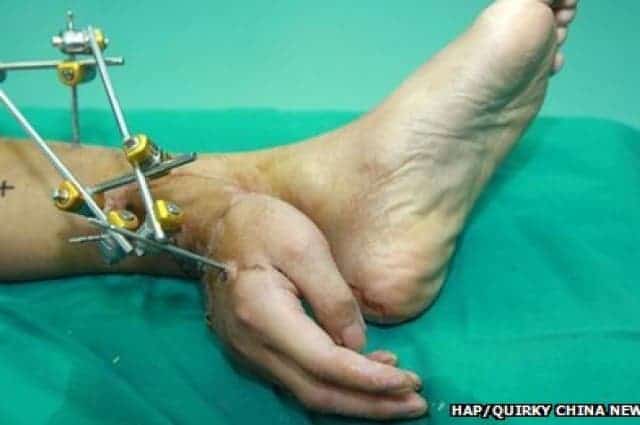Chinese doctors have grafted a man’s hand onto his food in order to preserve it until they could transplant it back to its rightful place.
If a body part becomes severed from the body, there is only a limited period of time before it can be reattached – usually just 2-3 hours. Adding some ice to it will increase the period of time, but not by long. Without a blood supply, muscles and tissues cannot last long, and the damage may become irreversible.
Unfortunately, even when medical assistance is available, it’s impossible to immediately reattach the body part. Such was the case of Xiao Wei from China, who lost his hand in a work related accident. His entire arm was crushed, and unfortunately, the wounds were so severe that the doctors had other bigger problems to fix fast before reattaching his hand; also, the arm had to heal first, in order to be possible to reattach the hand. So instead, they attached it to his ankle, from where it could “borrow” the blood supply, thus surviving long enough; one month later, surgeons were able to remove the hand from the ankle and replant it back on his arm.
“His injury was severe. Besides ripping injuries, his arm was also flattened.”. doctors explained. “We had to clear and treat his injuries before taking on the hand reattachment surgery.”
So far, Wei hasn’t regained full control of his hand, but he’s making considerable progress, and doctors are confident that he will do so relatively soon. Grafting body parts onto other places of the human body is not entirely unheard of, but it is an extremely rare procedure – though it’s understandable (and quite admirable) that they chose to do this.
The Chinese are pretty experienced in microsurgery,” Mr Cairian Healy of the Royal College of Surgeons in England told the BBC. “And the concept of saving a severed part of the body by attaching it to another part of the body to give it a blood supply is well recognised. The ankle is a hard place to graft though. Usually surgeons would go for the armpit because the blood supply is better.”








